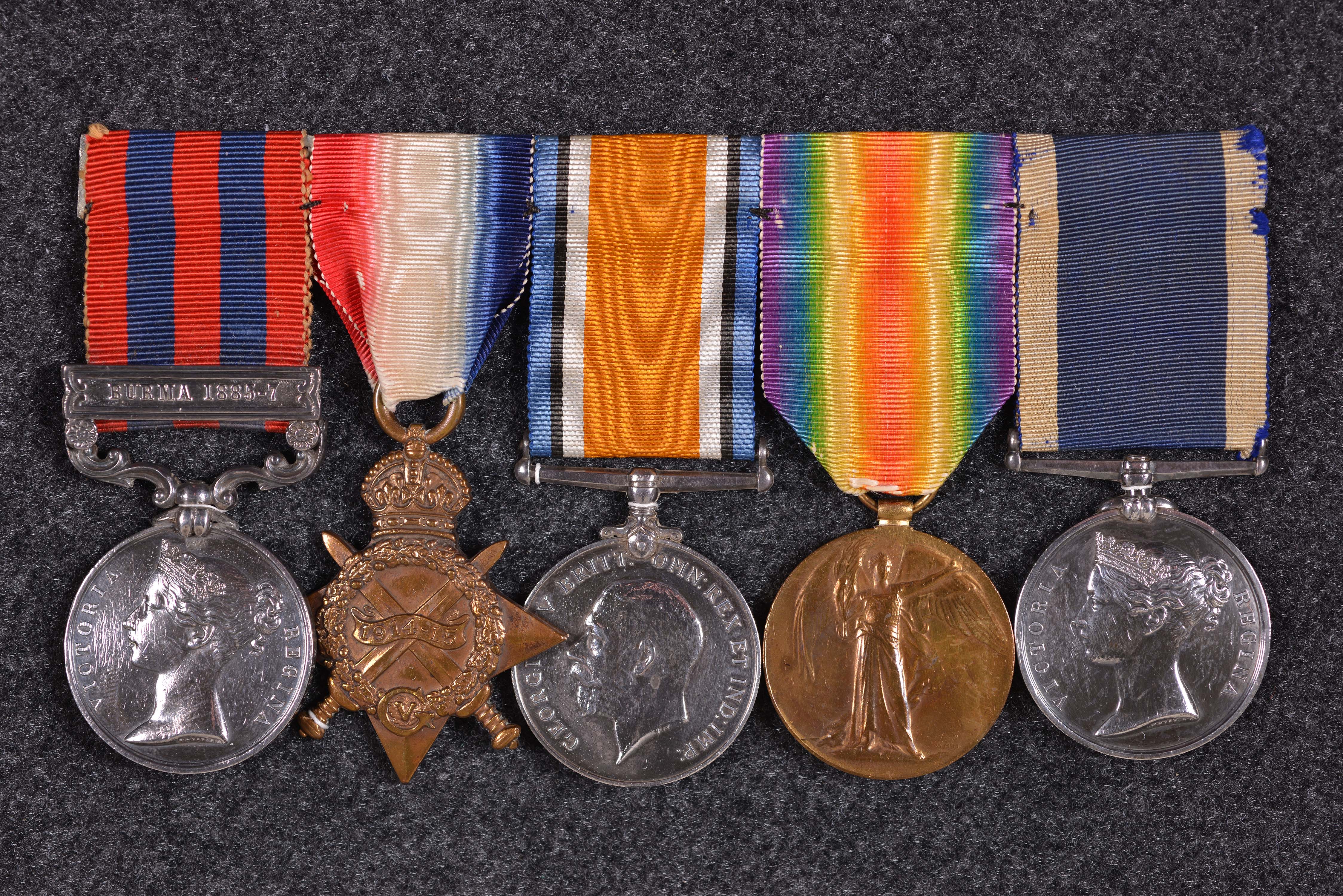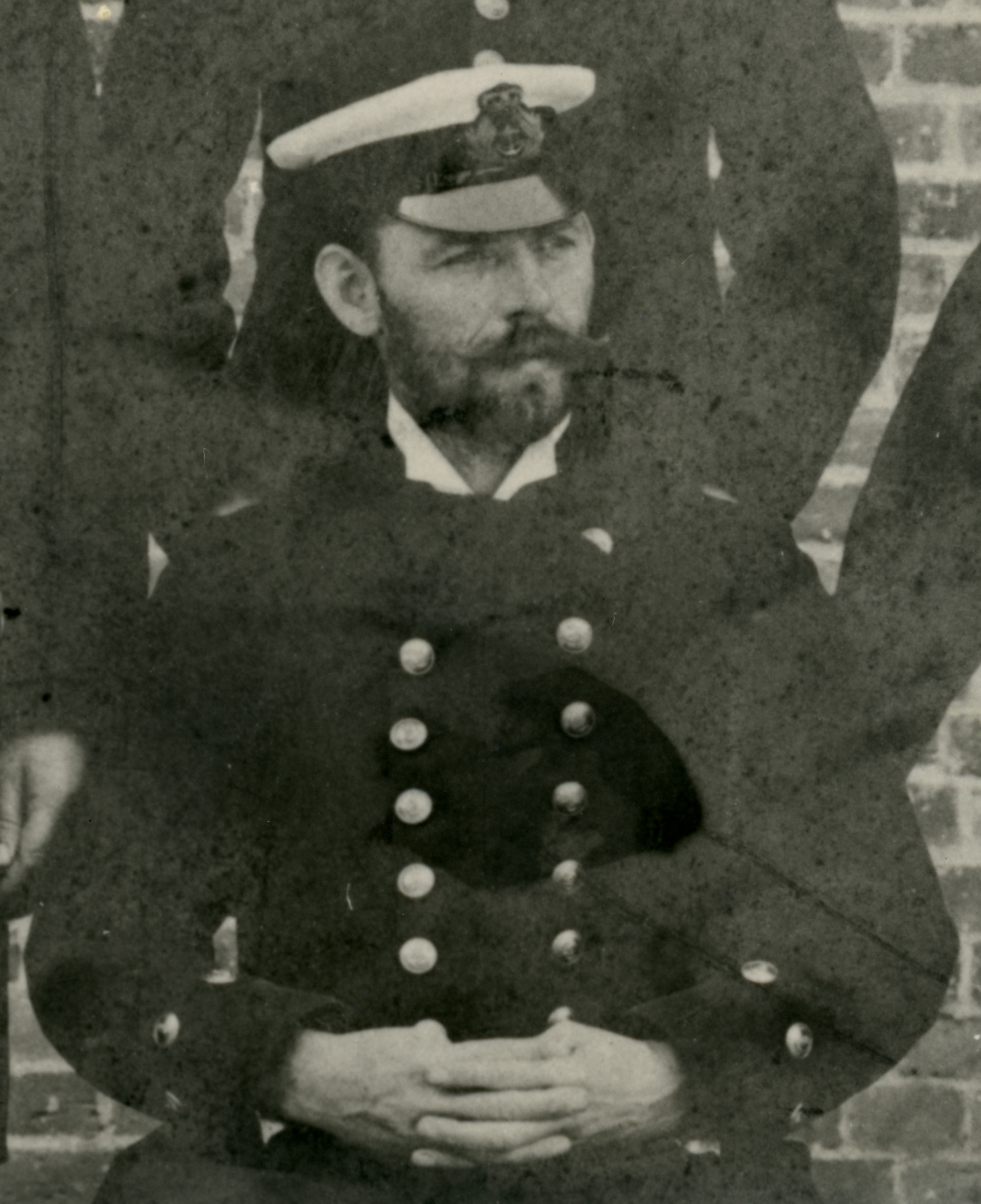

Display No. 3H
KING, Henry William Ford
Henry King joined the Royal Navy as a Boy 2nd Class in March 1882. He trained in HMS St Vincent. While serving in HMS Bacchante in late 1885, he participated in a police action when a British force proceeded up the Irrawaddy River to Mandalay, Burma, to overthrow a local king. This action eventually resulted in the annexation of Upper Burma by the United Kingdom. For his part in this action he was awarded the India General Service Medal with the clasp ‘Burma 1885-1887’.
In 1893 he transferred to the Naval Police Branch (Regulating Branch), with the rank of Ship’s Corporal 1st Class. From 1896, he was rated Master-at-Arms serving in numerous ships and shore establishments, including a short period in Canada. He retired from the Royal Navy in 1905. After leaving the Navy, King joined the Royal Fleet Reserve and participated in annual drill meetings until he was mobilised at the outbreak of the First World War. He spent most of his war career in shore establishments and was promoted to Acting Chief Master at Arms, during his service in HMS Pekin. King was demobilised at the end of the war and immigrated to British Columbia, Canada.
Awarded medal(s)
Medal Description [Left to Right]:
The 1914-1915 Star
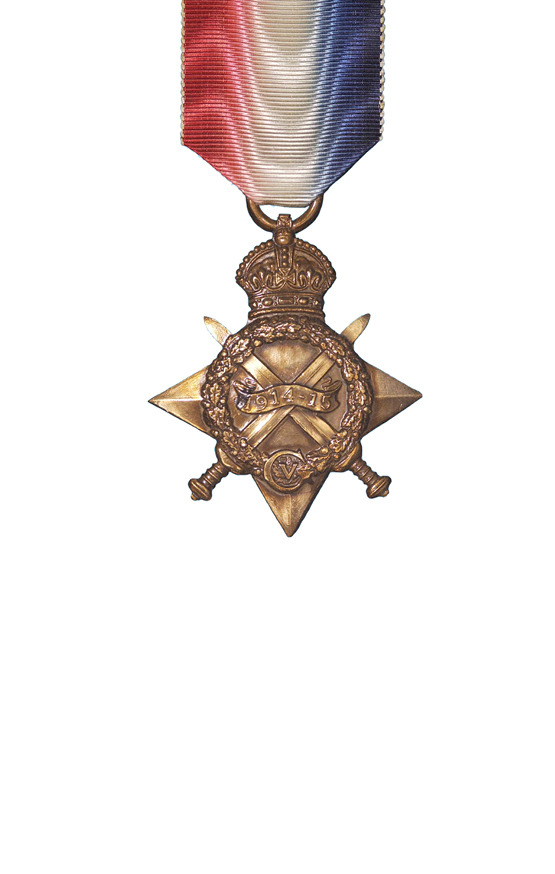
The 1914-15 Star was awarded to servicemen and servicewomen who served in the First World War between 5 August 1914 and 31 December 1915 in any “theatre of war”, provided they had not qualified for the 1914 Star. This included service at Gallipoli between 25 April 1915 and 31 December 1915, service in Egypt between 5 November 1914 and 31 December 1915, and service during the capture of German Samoa on 29 August 1914. Those eligible for the medal must have “served on the establishment of a unit in a theatre of war” during the relevant dates of operations in that area. The ribbon’s red, white and blue shaded and watered bands represent the flag of the United Kingdom.
The British War Medal
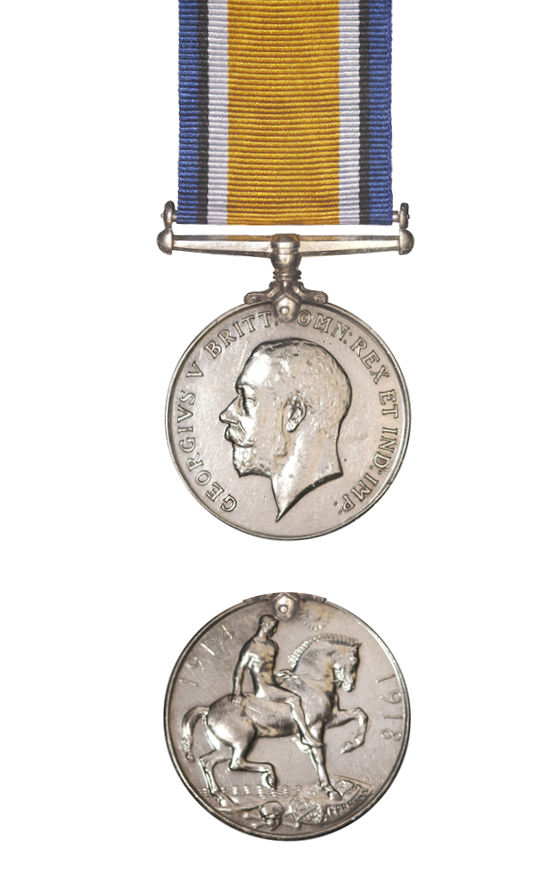
The British War Medal was instituted in 1919 to recognise the successful conclusion of the First World War (1914-1918). Its coverage was later extended to recognise service until 1920, recognising mine clearing operations at sea, and participation in operations in North and South Russia, the eastern Baltic, Siberia, the Black Sea and the Caspian Sea.
The Victory Medal
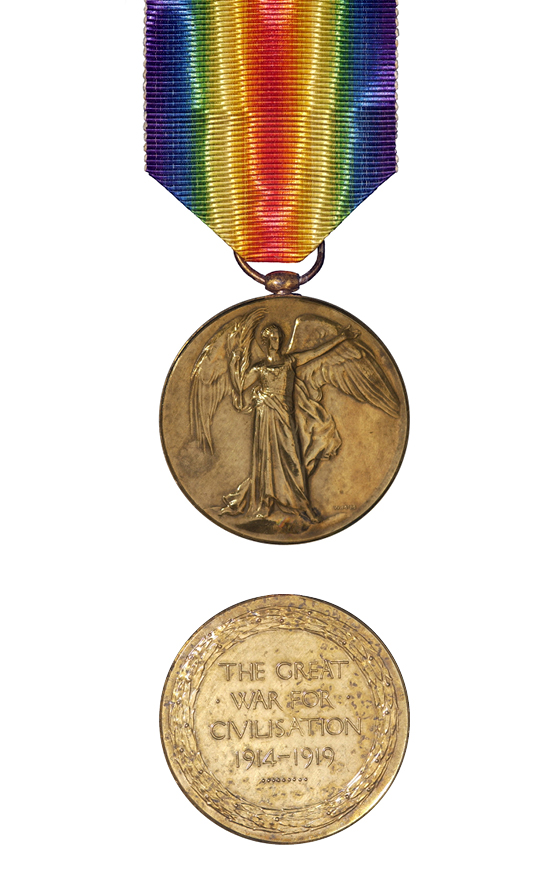
The Victory Medal was awarded in the First World War to all those who had already qualified for the 1914 Star or the 1914-15 Star, and to most persons who had already qualified for the British War Medal. The Victory Medal was awarded to all New Zealand troops serving overseas, except for those who arrived in Samoa after 30 August 1914 and those serving in Great Britain only. It has a unique double rainbow ribbon.
A bronze spray of oak leaves on the medal ribbon denotes that the recipient was Mentioned in Despatches during the period that the medal recognises. To be Mentioned in Despatches a member of the armed forces has had their name mentioned in an official report, written by a superior officer, and sent to a higher command. The report would describe the individual’s gallant or meritorious action in the face of the enemy.
Royal Naval Long Service and Good Conduct Medal
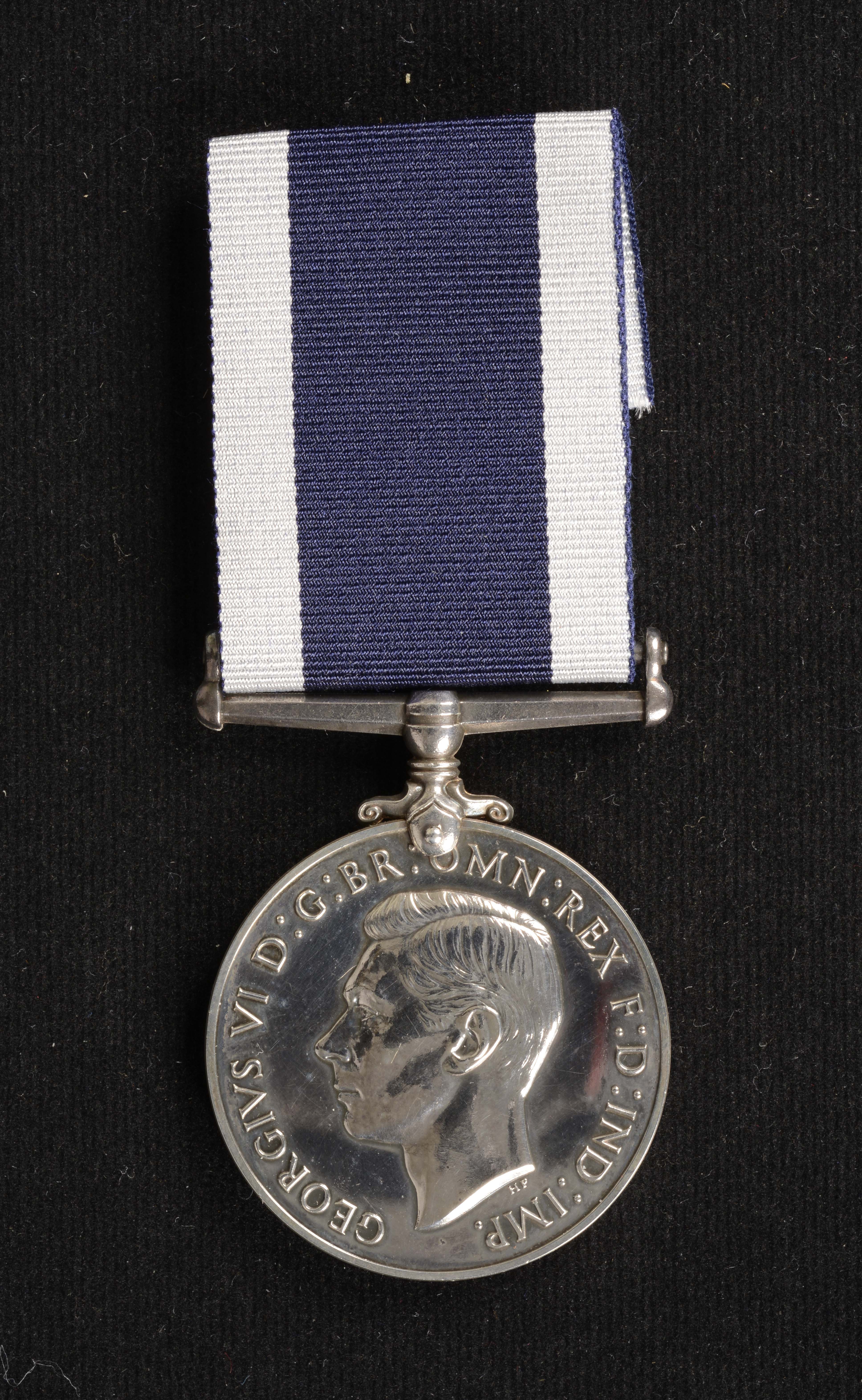
Awarded to ratings who have served a minimum of 15 years in the Royal Navy (previously 21 or 10 years), the first version of this medal was instituted in 1831 and it is still issued to Royal Navy personnel today. It features the reigning monarch’s head on the obverse and HMS Victory on the reverse with the recipient’s details engraved or impressed on the edge of the medal. This medal was also issued to eligible personnel serving in the New Zealand Division of the Royal Navy from 1921-1941 and then to Royal New Zealand Navy personnel from 1941-1981. In 1985 a New Zealand Royal Navy Long Service and Good Conduct Medal was introduced bearing the exact same design.
India General Service Medal
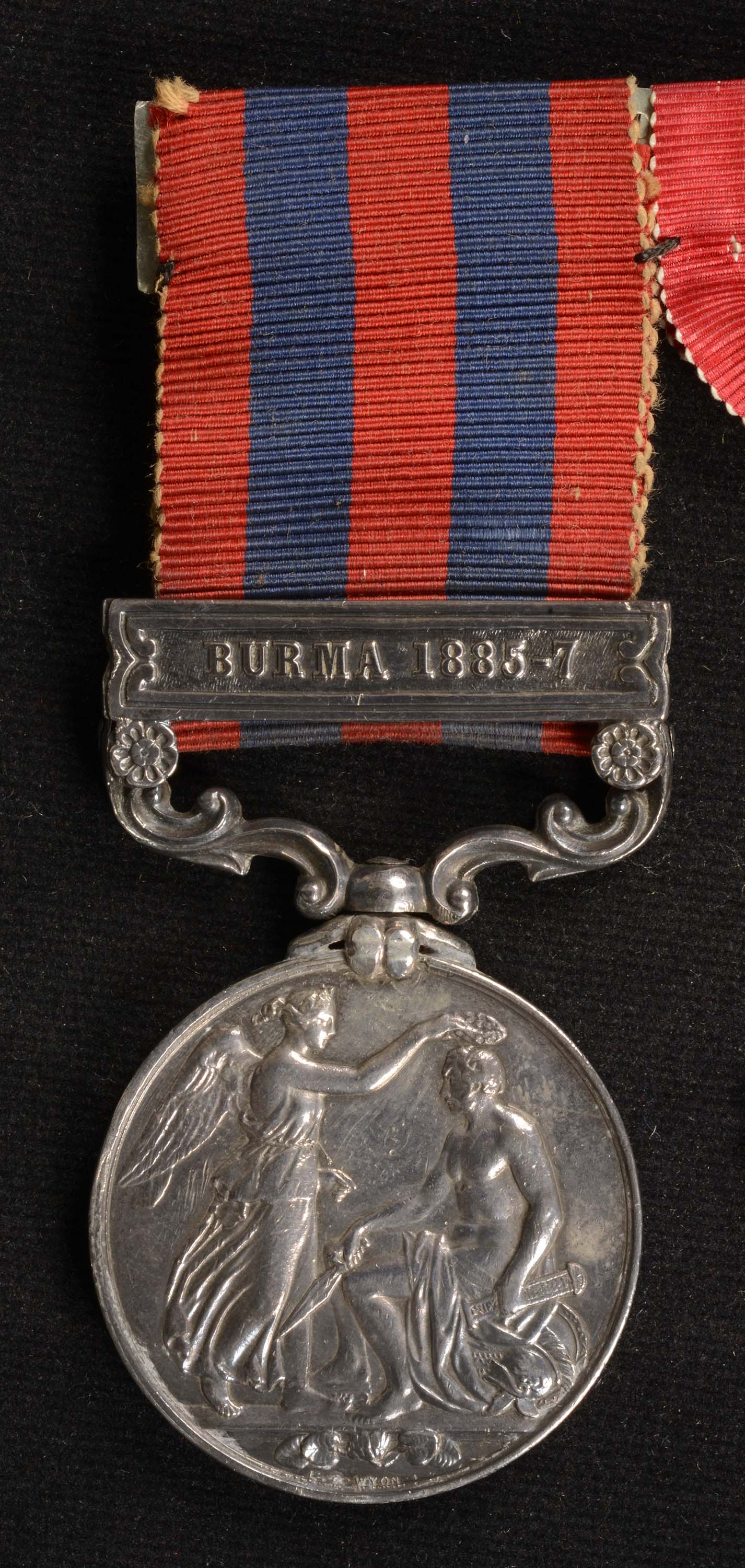
A campaign medal approved on 1 March 1854, for issue to officers and men of the British and Indian armies. It was awarded for various minor military campaigns in India and nearby countries between 1852 and 1895. A total of 24 clasps could be awarded for 23 campaigns with 55 qualifying actions. Those who qualified for a second clasp received the new clasp only to be attached to their existing medal. The medal was never issued without a clasp.

